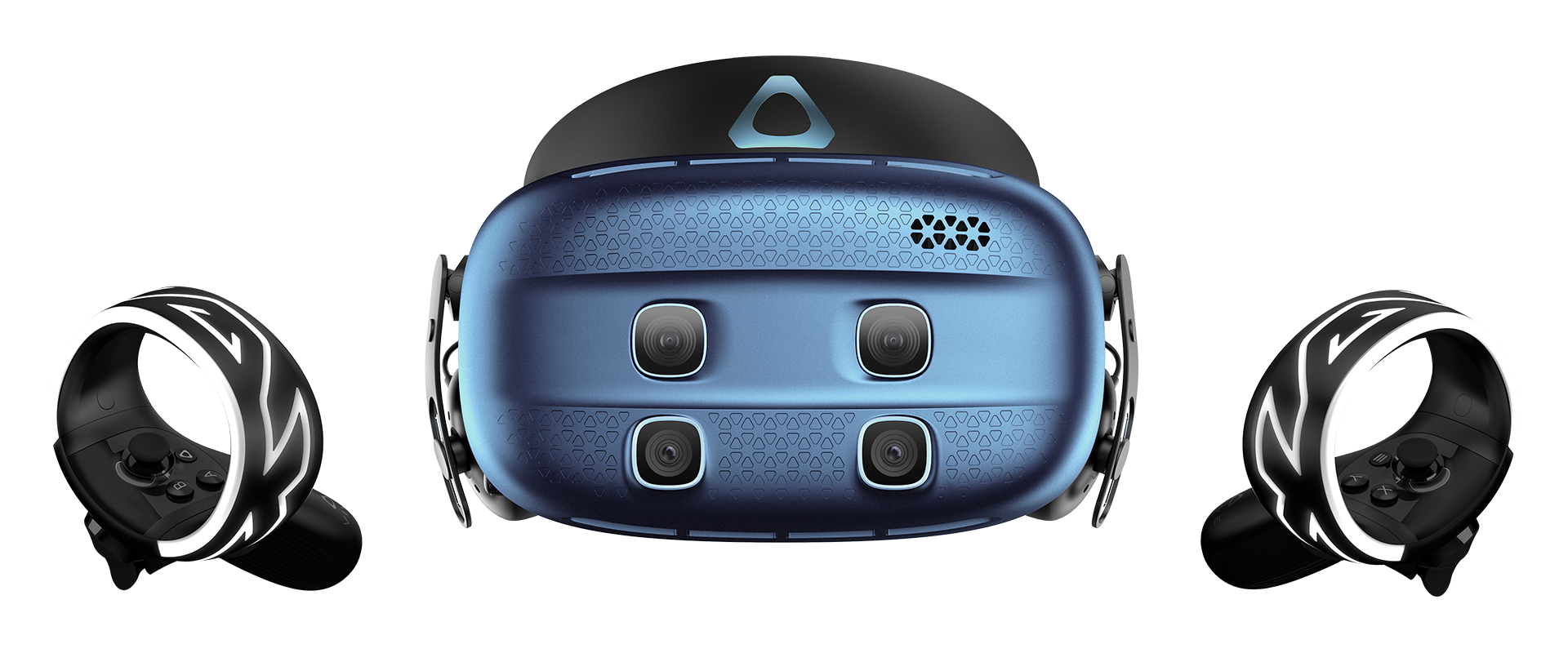HTC Vive Is Prepping a Cheaper Version of its Cosmos VR Headset

After almost 5 months on the market, the HTC Vive Cosmos is getting ready for some siblings. With the current version offering six tracking cameras for 6-degrees of freedom (6-DoF) tracking with PC-connected VR, the upcoming Cosmos Play will reduce the number of tracking cameras to four and cost less. Maker of some of the best VR headsets, HTC Vive is also introducing the Cosmos Elite, which adds two SteamVR base stations to the package for a more premium experience.
HTC Vive’s head-mounted display (HMD) game for 2020 will rely on modular faceplates that change the capabilities and power of the Cosmos headset.
“It’s really about flexibility, ease of use, buying in and purchasing at the price point that you want to and moving through the value chain of that product,” Dan O’Brien, general manager of North America for HTC Vive, told Tom’s Hardware
Vive Cosmos Play: A Cheaper Cosmos
HTC hasn’t settled on a final price for its lower-end Cosmos Play, but with today’s Cosmos set to stay at $699, the Cosmos Play should be significantly cheaper in order to court those who have held off on VR due to the price of HMDs. Meanwhile, the Oculus Rift S, which also doesn’t require base stations but has 6-DoF tracking via five cameras, is currently selling for $399.
Since the Cosmos Play only has four tracking cameras compared to the standard Cosmos’ six, it has less vertical and waist tracking capabilities, and it’s overall tracking is down to 110 degrees instead of 210 degrees.
The Cosmos Play will also lack the audio headphones of the Cosmos, which we found to produce clear and loud audio. But most of the Cosmos Play’s physical characteristics, including the ergonomics, dual 3.4-inch LCD display with 1400 x 1700 resolution per eye and RGB sub-pixels remain.
According to HTC Vive, this HMD will be a good fit for entry-level VR apps, including Angry Birds VR: Isle of Pigs, The Curious Tale of the Stolen Pets, A Fisherman’s Tale and Viveport Video.
Get Tom's Hardware's best news and in-depth reviews, straight to your inbox.
“If you have light experiences that you ... want to be able to go through and you want to bring it over to somebody's house with your laptop, then it becomes a much easier, much more mobile experience," O'Brien said. "But if you guys want to run from zombies, and use bow and arrows or play baseball games or very highly interactive games, you might want to use the six camera version."
Vive Cosmos Elite: Back to Base Stations
VR has been shifting to easier set-ups by dropping base stations and even offering quality VR experiences without tethering to any device, as the Oculus Quest does. But for the most premium and realistic VR with top-of-the-line tracking you still need a PC connection and base stations. Although the Cosmos was a big step for HTC Vive in not requiring base stations, in Q1 it’ll offer an $899 version of the Cosmos with Lighthouse base stations leveraging SteamVR tracking. It will be available for preorder starting February 24.
The Cosmos Elite will have an external tracking faceplate, (which works with versions 1.0 and 2.0 of SteamVR base stations), two SteamVR base stations and two Vive controllers. Those who own the original HTC Vive could also use the original HTC Vive or HTC Vive Pro controllers.
“We do have existing customers that have external tracking and base stations at home,” O’Brien explained. “They love the precision tracking, the laser base stations that SteamVR tracking gives you with sub-millimeter tracking accuracy. But we also have customers that want to take [the Cosmos] on the go with them and put it in inside-out tracking mode.”
According to HTC Vive, its Cosmos Elite is suitable for “precision gaming titles” and muti-player games, including Superhot, Pistop Whip, Audica and Battlewake.
O’Brien said that Viveport, HTC Vive’s app store, will be able to tell users which Cosmos headset works best with each app. However, he couldn’t specify if those who don’t own a Vive headset yet will be able to see this.
In addition to offering three different price points for the Cosmos, HTC Vive will also launch interchangeable Cosmos faceplates. The Cosmos Play faceplate with four cameras and inside-out tracking will be $49 (no release date yet). There will also be faceplate that brings six-camera inside-out tracking (like today’s Cosmos) and the Cosmos Elite faceplate with external tracking, which will both be available in Q2 for $199.
Vive Cosmos XR: For Developers (For Now)
The VR firm also announced today a version of its HMD for developers. The Cosmos XR will have a modular faceplate with XR passthrough cameras, that will enable “a near-complete passthrough field of view that utilizes the majority of the VR display (up to 100 degrees FOV) to integrate real-world and virtual content,” HTC Vive's announcement said.
If enough developers are able to create relevant content for this, it’s likely the Cosmos XR headset and/or faceplate will be made available to individual shoppers as well.

Scharon Harding has over a decade of experience reporting on technology with a special affinity for gaming peripherals (especially monitors), laptops, and virtual reality. Previously, she covered business technology, including hardware, software, cyber security, cloud, and other IT happenings, at Channelnomics, with bylines at CRN UK.
-
tennis2 Firmly in the camp of the Samsung Odyssey+ for $230 regardles... it's really hard to justify 3x the cost for that last 5-10% experience.Reply -
bit_user Dropping the light houses is a huge step in the right direction. But, if they want my money, they should contribute Linux support via Monado or OpenHMD. The latter currently supports Vive and Vive Pro, but only 3-DoF for each.Reply
The AR faceplate is a very intriguing development.


